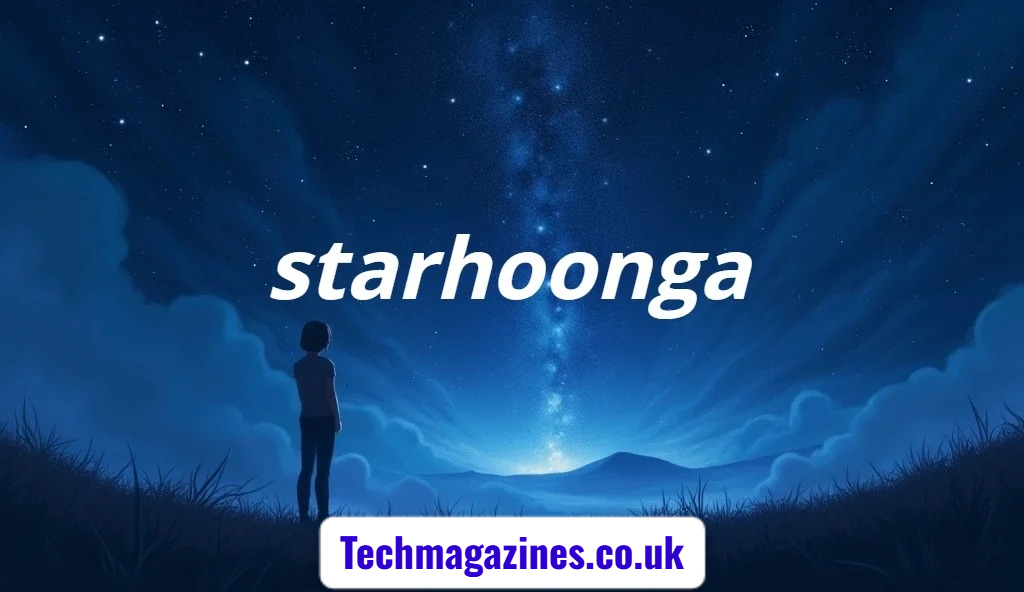
The term “Starhoonga” has recently emerged as a buzzword on social media platforms, inspiring countless users, particularly in the Indian subcontinent. Derived from Hindi, “Starhoonga” translates to “I will become a star.” It’s a bold declaration of ambition, hope, and self-actualization that resonates with dreamers, especially aspiring actors, musicians, influencers, and creators. This simple yet powerful word has evolved from a statement into a movement, a rallying cry for a generation determined to carve out their place in the world.
Unlike fleeting viral phrases, Starhoonga is rooted in a deeper cultural context. In India, where opportunities can seem limited by socioeconomic barriers, the concept of becoming a “star” symbolizes breaking free of those constraints. It stands for pushing boundaries and taking the leap toward one’s dreams, whether through social media fame, film, entrepreneurship, or art. The term has found its place in motivational content, TikTok videos, reels, and independent films, becoming a kind of motivational mantra for the masses.
The Rise of Starhoonga: From Meme to Movement
Starhoonga didn’t begin as a meticulously planned campaign—it arose organically, propelled by passionate individuals. One notable moment in its rise came from a viral Instagram reel where a young boy boldly declares “Starhoonga!” as he performs in front of a small crowd. His confidence, contrasted with humble surroundings, struck a chord with millions. The clip quickly garnered millions of views, and suddenly, people began creating their own versions.
Soon, the word wasn’t just a one-off. It appeared in hashtags, story captions, and YouTube video titles. What’s fascinating is how the phrase transcended the internet to manifest into real-life ambition. Aspiring actors and musicians began using it as a badge of honor, a declaration of intent. This grassroots virality turned Starhoonga into more than a phrase—it became a movement celebrating the underdog spirit.
Cultural Relevance and Deep-rooted Aspirations
To truly understand the impact of Starhoonga, one must consider the social fabric from which it arose. In countries like India, where economic disparities often limit personal dreams, becoming a “star” is not just about fame; it’s about rewriting one’s narrative. The term embodies resistance against societal limitations and carries emotional weight, especially for youth in small towns and rural regions.
Parents, teachers, and communities often discourage artistic dreams, urging safer, conventional careers. In this context, saying “Starhoonga” isn’t naive—it’s rebellious. It’s an act of self-belief. The phrase mirrors a growing shift in mindset among youth: success isn’t just a corporate job anymore—it’s influence, freedom, and the ability to be seen and heard.
How Social Media Powered the Starhoonga Phenomenon
Social media platforms like Instagram, TikTok, and YouTube Shorts have been instrumental in popularizing the Starhoonga phenomenon. Their short-form video formats provide the perfect medium for self-expression, allowing creators to manifest their journey from “nobody” to “somebody” in real-time. Hashtags like #Starhoonga and #MainStarHoonga have racked up millions of views, giving rise to thousands of content creators.
Notably, the democratizing nature of these platforms allows even those without expensive equipment or training to participate. All it takes is a smartphone, a good idea, and the courage to say “Starhoonga” out loud. The algorithm rewards confidence, creativity, and consistency—values that align directly with the Starhoonga mindset.
Influencers and Celebrities Who Embrace Starhoonga
What began as a grassroots phrase has now caught the attention of digital influencers and even some Bollywood celebrities. Influencers like Bhuvan Bam, Ashish Chanchlani, and CarryMinati have indirectly promoted the Starhoonga ideology through their own rags-to-riches journeys. These creators often share their humble beginnings and emphasize the importance of self-belief—an embodiment of the Starhoonga spirit.
Even mainstream celebrities like Ranveer Singh and Ayushmann Khurrana have nodded to similar themes in their interviews and social media posts. Their encouragement lends credibility to the phrase and inspires more people to join the movement, believing that stardom isn’t reserved for the elite but is within reach for anyone with passion and persistence.
Psychological Impact: The Power of Positive Affirmation
From a psychological standpoint, “Starhoonga” serves as a powerful positive affirmation. Repeating this phrase can instill a growth mindset, reinforce self-worth, and counter negative self-talk. In a world where social comparison and self-doubt are rampant, especially among youth, affirmations like this offer mental resilience.
Psychologists often advocate for the use of affirmations to rewire thought patterns and motivate action. Saying “Starhoonga” isn’t just vocal—it’s cognitive reconditioning. It trains individuals to visualize their goals and take steps toward them, believing they are deserving of success and recognition.
5 Ways Starhoonga Inspires Ambition
- Motivates individuals to break out of their comfort zone
- Encourages youth to pursue unconventional careers
- Helps combat low self-esteem with daily affirmations
- Builds a digital community of support and mentorship
- Offers a symbolic narrative for self-reinvention
Starhoonga vs. Real-World Challenges
As uplifting as the phrase is, real-world obstacles remain. Not everyone who believes they will become a star will find overnight success. The entertainment and content industry is fiercely competitive. Rejection, burnout, and financial instability are common. Critics argue that phrases like “Starhoonga” might create unrealistic expectations.
However, proponents suggest that the journey itself is valuable. Even if one doesn’t become a celebrity, the pursuit often leads to skills, relationships, and personal growth. Starhoonga isn’t a guarantee of fame; it’s a mindset of persistent striving, which can bring success in many forms—not just spotlight recognition.
Digital Platforms Fueling the Dream
Here’s a quick comparison of platforms driving the Starhoonga movement:
| Platform | Best For | Unique Feature |
| Instagram Reels | Visual storytelling & virality | Algorithm favors emotional content |
| YouTube Shorts | Longer visibility | Monetization and subscriber growth |
| TikTok | Global reach & trends | Quick rise through challenges |
| Moj & Josh | Indian regional outreach | Vernacular language support |
These platforms offer accessible entry points for aspiring creators, allowing them to test content, build audiences, and evolve creatively without high entry barriers.
Entrepreneurial Spin-Offs from the Starhoonga Mindset
Starhoonga has also inspired entrepreneurship. Creators who began as meme-makers or video editors have now turned into brand consultants, digital marketers, or even agency founders. The skills honed through content creation—editing, storytelling, community building—are highly transferable.
Startups and platforms are tapping into this mindset. From personal branding courses to “creator bootcamps,” the Starhoonga movement has spurred a mini-economy around talent development. Apparel lines with “Starhoonga” slogans, merchandise, and NFTs have started popping up, proving that this isn’t just a trend—it’s becoming a subculture.
The Role of Regional Languages and Local Influence
One of the most unique aspects of the Starhoonga movement is its adaptability to regional dialects and cultures. While the phrase is rooted in Hindi, variations of it appear in Punjabi, Marathi, Tamil, and Telugu content. This linguistic flexibility helps it resonate across India’s diverse population, adding local flavor to a universal emotion.
Local influencers in smaller towns are leveraging this vernacular content strategy to build niche audiences. This not only fuels the Starhoonga movement but also decentralizes influence from metro cities to the grassroots level, promoting more inclusivity.
Starhoonga as a Tool for Education and Self-Learning
Interestingly, educators and coaches have begun using the Starhoonga ideology to inspire students. Workshops, webinars, and school programs now include motivational segments centered around self-belief and goal-setting. For underprivileged children, this message becomes especially potent—it tells them that regardless of background, success is within reach.
Online learning platforms have even created “Starhoonga tracks” that teach public speaking, confidence building, and content creation. These resources equip learners with practical tools to match their ambitions with tangible outcomes, bridging the gap between dreams and action.
Criticism and Reality Check
Of course, no movement is without criticism. Detractors argue that Starhoonga romanticizes success and ignores the realities of hard work, connections, and luck. The glamorization of fame could also cause frustration among those who don’t achieve it quickly. Some even suggest that it contributes to the “hustle culture” that glorifies constant effort without rest.
However, responsible mentors within the movement now emphasize balance. They advocate for mental wellness, practical planning, and diversified definitions of success. After all, becoming a “star” can mean being an impactful teacher, a caring parent, or a respected professional—not just a celebrity.
From Meme to Manifestation: Real-Life Stories
Across India and beyond, there are now numerous success stories born out of the Starhoonga spirit. From self-made rappers in Punjab to stand-up comedians in Mumbai slums, the phrase has been more than words—it’s a declaration of intent followed by consistent effort. Interviews, vlogs, and documentaries often trace these creators’ beginnings to a single video or post where they said, “Starhoonga”—and believed it.
Their stories act as proof of concept. They show that while the road is tough, the mindset truly matters. These individuals didn’t wait for permission or perfection—they acted on their belief.
The Future of Starhoonga: Will It Last?
While digital trends fade fast, the ethos of Starhoonga seems to have staying power. It aligns with universal human aspirations and is anchored in cultural and emotional authenticity. As long as new generations dream, the phrase will hold meaning.
Brands are already beginning to co-opt the term for marketing campaigns. This could either dilute its grassroots spirit or elevate it to new heights. The future of Starhoonga lies in the hands of the very creators who made it—those who continue to believe in their star potential despite the odds.
Conclusion: Starhoonga Is More Than a Phrase
The journey from a viral reel to a cultural rally cry proves that Starhoonga is more than just a trending word—it’s an emotional movement. It empowers individuals to break societal molds, trust in their potential, and strive toward visibility and value. While it does not guarantee fame, it encourages the mindset needed to pursue meaningful success. In a world craving authenticity, the Starhoonga spirit reminds us that believing in yourself might just be the first step toward becoming unforgettable.
FAQs About the Starhoonga Movement
1. Is Starhoonga just for aspiring celebrities?
No. While it resonates with creatives, the term applies to anyone striving for self-improvement, visibility, and success in any field.
2. Can saying “Starhoonga” actually impact my confidence?
Yes. Like many affirmations, repeating Starhoonga can reinforce a growth mindset and motivate action over time.
3. Is there any risk in following the Starhoonga ideology?
The main risk is building unrealistic expectations. However, when paired with hard work and balanced goals, the Starhoonga mindset can be incredibly empowering.



